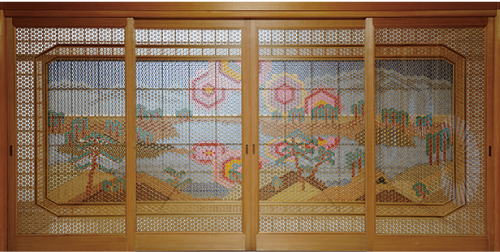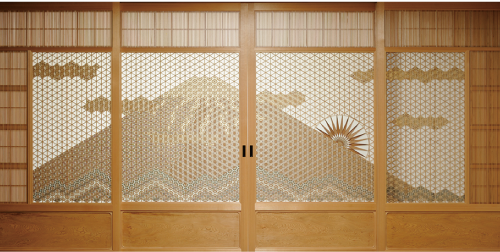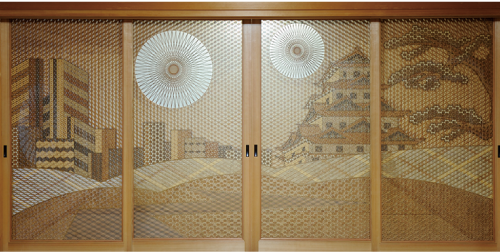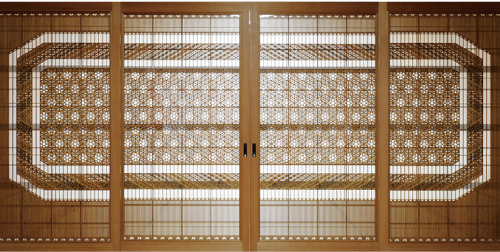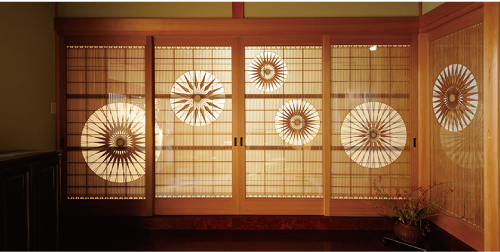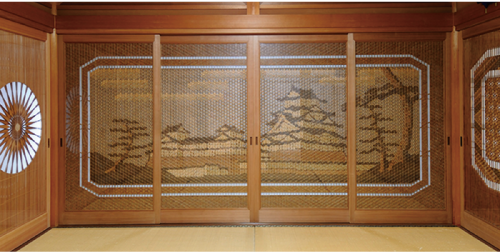![]()
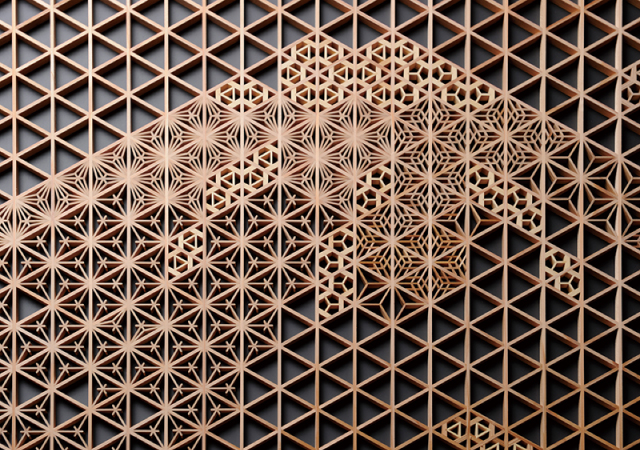
Traditional Japanese muntins, or kumiko, are crafted by joining pieces of wood together without the use of nails.It is one of Japan's traditional crafting techniques, developed alongside Shoin-zukuri, a traditional Japanese architectural style, in the Muromachi era (1336-1557) the technique was used in making the wooden fittings of windows, shoji (paper sliding doors), ranma (transom), and so on.Cutting up a cleft into 1.5mm wooden pieces, cuts and tenons are added to create wooden joint designs.Muntins created by the above method is what we call Kumiko.For some designs, over 100 000 pieces of wood can be used, ever single one of them having been carved by hand by our master craftsmen.There are over 100 design patterns, and beautiful and original muntins are made by combining these patterns.
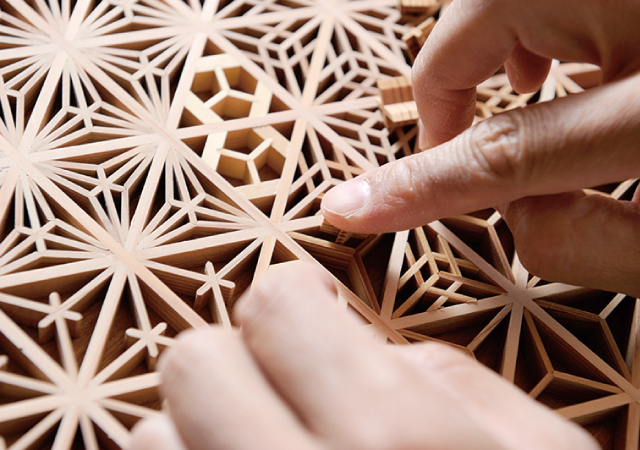



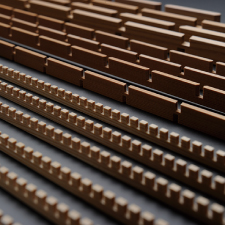
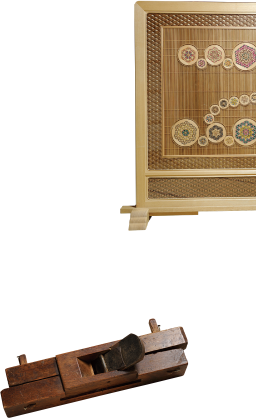
Kumiko wooden fittings are our speciality.Our designer muntins, incorporating traditional and original designs, are highly appraised.From homes to shrines to restaurants, Sashikan fittings are used widely, providing an atmospheric fusion of Japanese culture and modern tastes.
By fitting small pieces of wood together, the Kumiko muntin technique harbours designs that are delicate and yet full in variety.The design is beautiful and multifaceted resembling a kaleidoscope.Muntin used for shoji or ranma interact with the light, casting fantastic shadows on the floor.
All artistic designs of the wooden fittings are creations of Norio Kuroda.His designs are mostly based on natural beauties, upon which bold structures and bright illustrations are added.The high skill levels are present in every facet of his work, and his inimitable designs are rated very highly.
Here, wooden rings built using the Goko-gumi technique are linked together by a wooden chain, mimicking the movement of bicycle wheels.This is a rare design and the movement is activated by a sensor.
In an environment where traditional Japanese style houses are disappearing, work opportunities for us joiner meisters are also on the wane.With the need to adapt our products to modern demands, we came up with the idea of collaborating with designers of the new generation.From this initiative came designer goods that revolutionised traditional conceptions of muntin craftsmanship, and a new technique called Kakumaru kumiko was developed.To further build upon these developments, we are aiming to develop muntins for modern houses by utilising the characteristic functionality and beauty of kumiko and natural raw materials befitting of the Japanese natural scenery.This is about ensuring that our traditional craftsmanship eves on and is handed down to future generations. This is about the survival of our craft and is therefor the duty of the current generation of craftsmen.Tradition can only survive through revolution. I fully intend to take care of my duties as a craftsman.
We challenge ourselves to create designer goods and interior products in collaboration with cutting edge designers. By adding modern designs to the traditional skills and designs of kumiko, a new line of products have been produced aimed to appeal the skills and creativity of the Sashikan to the next generation.
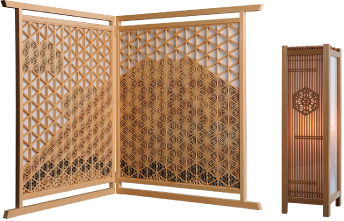
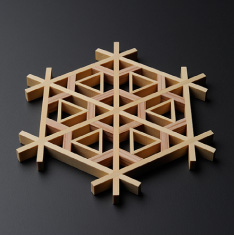
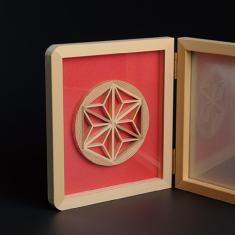
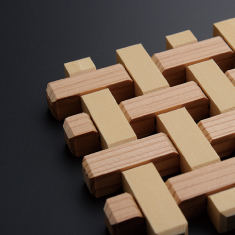
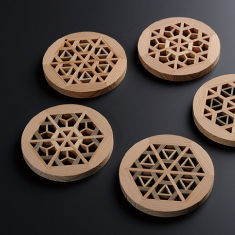

Our stationery box was presented as a gift for the leaders of countries and international organizations who had arrived in Japan to attend the Ise-Shima Summit that was held on 26th and 27th May 2016, in Ise-Shima, Mie Prefecture.
It was crafted with Japanese cypress and cedar, both of which were harvested locally in Mie Prefecture. A traditional joining technique called "wa-tsunagi" was used to create a pattern known as Kissho Mon-yo.
We are going to be developing a new line-up of home decor products such as coasters and lamps, in order to make the traditional "Kumiko" joinery a more accesible art form to as many people as possible.

We have developed original muntin designs such as the Goko-gumi and the Roppo-korobi. The two master craftsmen at Sashikan, second generation master and Great Craftsmen in the present world nominee, Yukio Kuroda and the young third successor, Yuji Kuroda. These two meisters are in charge of preserving the unique craftsmanship of the Sashikan. Techniques that can not be learnt from manual books. Achieved by pursuing a technical revolution based on the mixture of tradition and modern creativity.
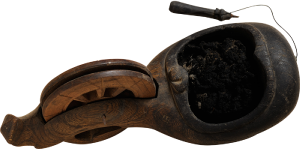


The Second successor
First class joiner craftsman
Creator of Goko-gumi, Roppo-korobi and other designs
using traditional Japanese muntin techniques.
| 1994 | Mie Prefecture Governor Award |
|---|---|
| 1999 | Mie Meister Certificate |
| 2002 | "Great Craftsman of the Present World" Minister's Secretariat, Ministry of Health, Labour and Welfare Award |
| 2005 | Spring Decoration Medal, Yellow Ribbon award |
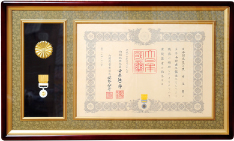
Prize of Minister's Secretariat, Ministry of Health, Labour and Welfare
Prize of Smaller Enterprise Agency's Director (twice)
2009 "Muntin Joiner Exhibition" Yukio Kuroda's skills as one of the Great Craftsmen
At the Okada Cultural Foundation Paramita Museum (Komono, Mie)
Exhibition at the Japanese Section of Expo 2015 in Milan, Italy
The third successor
First class joiner craftsman
Merging modern tastes and traditional techniques inorder
to create new products that better suit modern architecture.
Mie Joiner Art Exhibition
| 2008 | Prize of 30th Mie Prefecture Governor |
|---|---|
| 2017 | Prize of 38th Mie Prefecture Chairperson etc. |
Japan Joiner Art Exhibition
| 2008 | Prize of 42nd Japan Federation of Wood-industry Associations Chairman |
|---|---|
| 2016 | Prize of 50th Prime Minister |
| 2017 | Prize of 51st National Federation of Forest Owners' Co-operative Association Chairperson etc. |
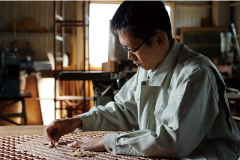

![]()
Our products were exhibited at EXPO Milano 2015 Japan Pavilion.
The traditional techniques and delicate designs of Kumiko received world-wide attention.
1537-1 Ojima Komono cho Mie gun, Mie
Business hours 9am - 5pm Monday to Saturday
TEL +81-59-396-1786


